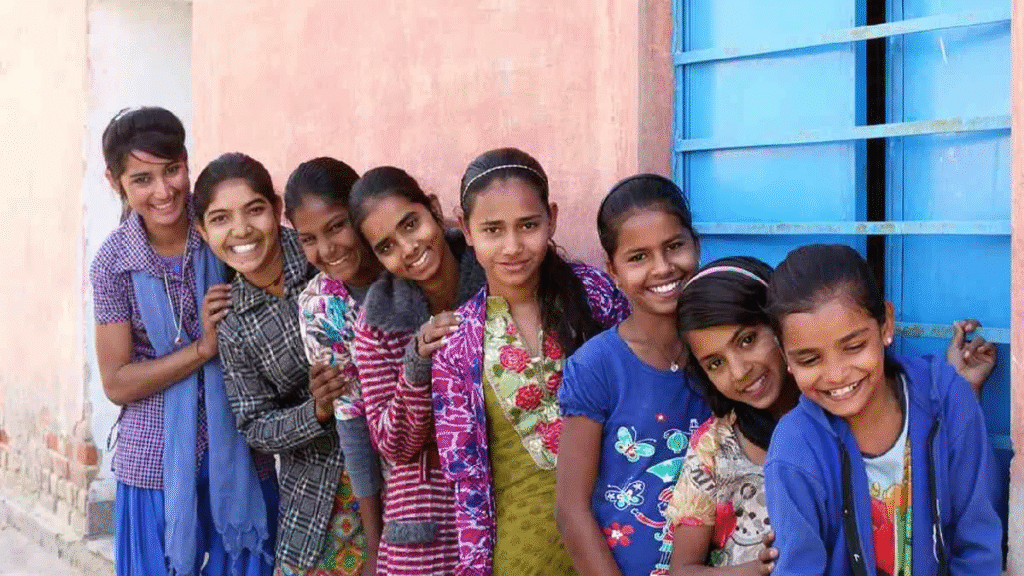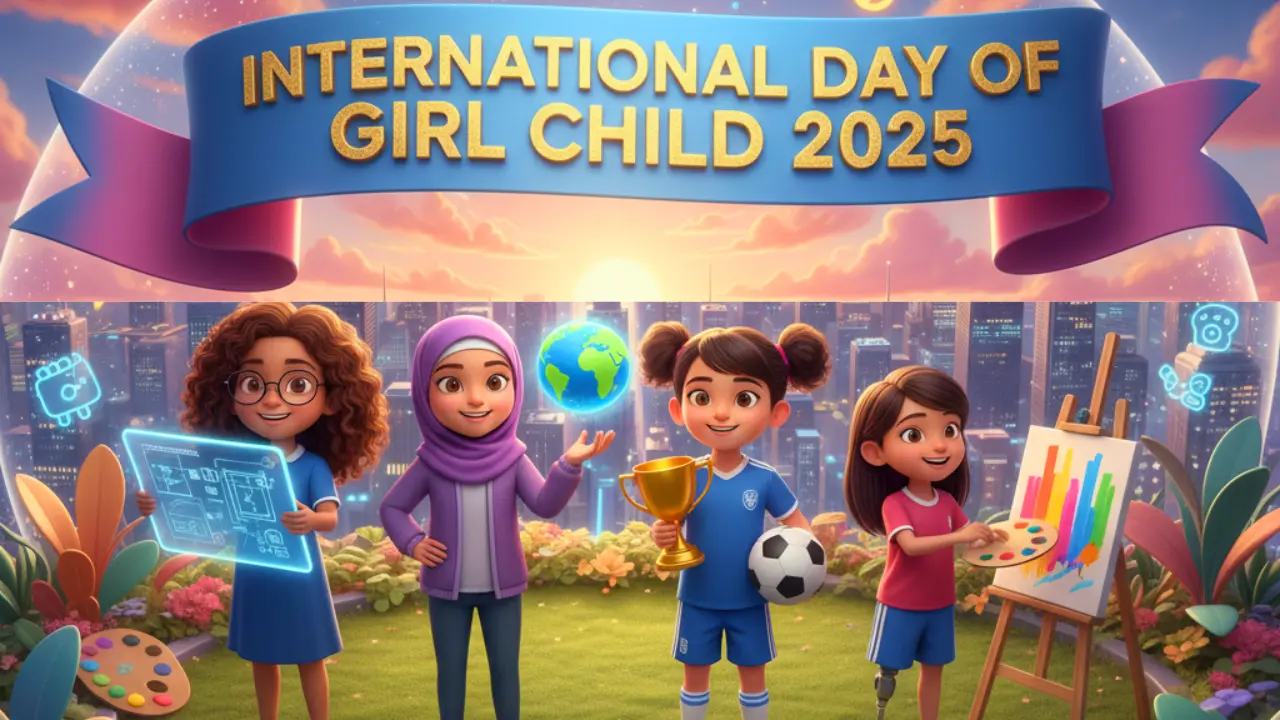Imagine a world where every single girl, regardless of where she is born, has the power to shape her own destiny. A world where her voice is not just heard, but actively sought out. That vision is what the International Day of Girl Child 2025 stands for, and in 2025, it is more critical than ever. Celebrated annually on October 11th, this day is far more than a simple observance; it is a global rallying cry for gender equality and the empowerment of young women everywhere.
The journey toward a fully equitable world still presents significant hurdles.
Girls globally continue to face disproportionate challenges, from limited access to education and healthcare to the pervasive threats of violence and child marriage. Yet, they are not passive victims; they are the most resilient agents of change. This year’s theme perfectly captures this spirit, positioning girls at the forefront of global progress.
Join us as we explore the rich history of this vital day, delve into its profound significance and importance, reveal the transformative 2025 theme, and arm you with inspiring quotes to become an advocate for girls’ rights.
History of the International Day of Girl Child: The Global Mandate
The story of the International Day of Girl Child is rooted in the recognition of a clear gap in global development agendas: the unique rights and challenges faced specifically by young girls. While an International Women’s Day and a Universal Children’s Day existed, neither fully addressed the specific discrimination and disadvantages experienced by girls because of their age and gender.
Key Milestones in its Establishment
The concept for a dedicated day gained significant momentum through the work of Plan International, a global non-profit organization. Their “Because I Am a Girl” campaign played a crucial role in bringing the issue to the world stage.
- Beijing Platform for Action (1995): The foundational blueprint for advancing women’s and girls’ rights was unanimously adopted at the Fourth World Conference on Women in Beijing, setting the stage for focused attention on the girl child.
- UN Resolution (2011): Canada spearheaded the resolution at the United Nations General Assembly. On December 19, 2011, the UN officially adopted Resolution 66/170, declaring October 11th as the International Day of the Girl Child.
- First Observance (2012): The first International Day of the Girl Child was observed on October 11, 2012, with its focus theme being “Ending Child Marriage.”
Since then, the day has become an essential platform for governments, organizations, and communities to commit to concrete actions that support girls’ rights and well-being.
Significance and Importance: Why One Day Matters

The importance of the International Day of Girl Child lies in its ability to bring focused, global attention to systemic issues. By spotlighting these challenges, it drives resources and political will toward solutions.
Also Read: World Mental Health Day 2025: A Call for Crisis Care
The Power of Focused Advocacy
The observance serves several critical functions:
- Amplifying Voices: It provides a platform for girls to express their ideas, demands, and solutions, positioning them not just as beneficiaries, but as leaders.
- Targeting Unique Vulnerabilities: It draws attention to issues like child marriage, gender-based violence, period poverty, and unequal access to digital skills, which disproportionately affect girls.
- Driving Economic and Social Change: When girls are educated, healthy, and empowered, the benefits ripple outward. They have healthier families, earn higher incomes, and lift their communities out of poverty. It’s an investment with exponential returns.
Consider this statistic: Despite progress, as of early 2025, an alarming 122 million girls globally remain out of school. This stark number underscores the urgent need for continued, focused efforts on girls’ education and training, proving that the work of this day is far from over.
Theme of International Day of Girl Child 2025: Leading Change
The theme for the International Day of Girl Child 2025 is perhaps its most empowering to date:
“The girl I am, the change I lead: Girls on the frontlines of crisis.”
This theme is a powerful acknowledgment of the leadership girls demonstrate, particularly in the face of conflict, climate change, and other humanitarian crises. It moves beyond seeing girls as only vulnerable and celebrates their ingenuity, resilience, and capacity to lead.
Core Pillars of the 2025 Theme
- Acknowledge and Invest in Girl-Led Solutions: Recognizing that girls often have the most innovative and context-specific solutions for their communities.
- Prioritize Girls’ Needs in Crisis: Calling for dedicated funding and policies that address the unique risks girls face in fragile settings, including sexual violence and maternal mortality.
- Create Safe, Girl-Led Spaces: Advocating for environments where girls can gather, connect, learn, and gain the support they need to become confident leaders.
Inspiring Quotes for International Day of Girl Child 2025

To inspire action and reflection on this important day, share these powerful quotes:
- “We cannot all succeed when half of us are held back. We call upon our sisters around the world to be brave – to embrace the strength within themselves and realize their full potential.” – Malala Yousafzai
- “To all the little girls who are watching this, never doubt that you are valuable and powerful, and deserving of every chance and opportunity in the world to pursue and achieve your own dreams.” – Hillary Clinton
- “Girls are one of the most powerful forces for change in the world: When their rights are recognized, their needs are met, and their voices are heard, they drive positive change in their families, their communities, and the world.” – Kathy Calvin
Making a Difference: Your Role in Empowering the Girl Child
The global movement for the girl child requires collective effort. Here are tangible steps you can take:
- Support Girl-Led Initiatives: Look for local or international organizations, especially those run by girls, that focus on education, digital literacy, or mental health.
- Advocate for Policy Change: Use your voice to demand that local and national governments prioritize girls’ safety and access to quality, gender-responsive education.
- Champion Mentorship: If you are a woman, mentor a young girl. If you are a man, become a visible ally for equality.
The Unstoppable Wave of Girl Power
The International Day of Girl Child 2025 is a moment of celebration, commitment, and re-dedication to the cause of gender equality. The theme, “The girl I am, the change I lead: Girls on the frontlines of crisis,” reminds us that the power to transform the world doesn’t belong to some distant generation, but to the girls living and leading right now. Their courage in the face of adversity is not just inspiring; it is the blueprint for a more equitable and sustainable future for all.
This October 11th, don’t just observe; ACT. Share a girl’s story of leadership, advocate for policy change in your community, and make a financial contribution to an organization that is investing in girls’ education and safety. Let’s stand with the girl child, today and every day, until every girl can reach her full, unstoppable potential.
FAQs on International Day of Girl Child 2025
Q1: What is the official date for the International Day of the Girl Child in 2025?
A: The International Day of the Girl Child is celebrated annually on October 11th.
Q2: What is the theme for the International Day of the Girl Child 2025?
A: The official theme for 2025 is “The girl I am, the change I lead: Girls on the frontlines of crisis.” This theme focuses on supporting and amplifying girls’ leadership, particularly in the face of global challenges.
Q3: Which country proposed the idea for the International Day of the Girl Child?
A: The idea was first formally proposed by Canada at the United Nations General Assembly, which led to the adoption of the resolution in 2011.
Q4: Why is a separate “Day of the Girl Child” needed when we already have International Women’s Day?
A: A separate day is crucial because it focuses specifically on the unique challenges and rights of adolescent girls (aged 10-18) who face compounded discrimination due to both their age and their gender. Issues like child marriage, early pregnancy, and school-related gender-based violence are often specific to this age group.
Q5: How can I find reliable, data-driven resources to support my advocacy for the girl child?
A: You should consult reports from authoritative sources like UNICEF, UN Women, Plan International, and UNESCO. For global progress and data, refer to the [UNICEF’s reports on adolescent girls’ rights]















